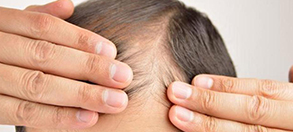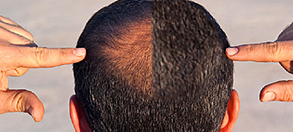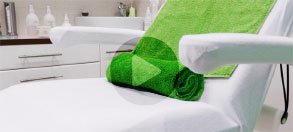The Nineteenth century introduced a new wave in philosophy that completely transformed western society. From literature to fashion, people changed the way they lived en masse. Romanticism emerged out of the Age of Enlightenment during the 18th century; those who followed this movement rejected the oppressive nature of aristocratic society, including its scientific rationalizations of nature. People living during the Romantic era believed in the aesthetic experience. This reflected in literary and artistic works. It also showed in the way people dressed their hair.
The first decade of the 1800s carried over the Neo-classical hairstyle from the times of the Napoleonic Empire. During this time, women wore their hair with curls covering their forehead and just above the ears. The hair held at the back of the neck with a knot or chignon. Many women accentuated their hairstyles with ribbons, headbands, or diadems. Women started to change this hairdo closer to 1820 when they parted their hair in the center and pulled it back smoothly toward the back. At this time, women wore hats or bonnets in public places. This became commonly referred to as the “Pride and Prejudice hairstyle” of the 1800s.
Queen Victoria of England ruled from 1837 to 1901, a period coined the “Victorian Age” because of the characteristics it displayed during this time. The Victorian Age marked an age of energy, industrial, and economic expansion dominated by Britain in its quest for world leadership. During the 1800s, people adopted this moral for its straight and solid principles. This new trend transferred over to how men wore their hair. From about 1840 to 1865, men wore their hair long with big mustaches and sideburns or beards, like U.S. President Abraham Lincoln.
During this Victorian period, women wore chignons at the top of their heads with locks falling on either side of their face. They added decorations to their hair, such as combs, leaves, pearls, and ribbons. In 1850, women began to wear curls framing their face. Around 1860, women began to wear chignons at the nape. After 1860, women started using metallic hair curlers at night to preserve their curls and waves. In 1872, Marcel Grateau patented the first curling iron made from heavy tongs and rounded internal surfaces. The curling iron had a circular convex arm on one side, and a concave one on the other. This design ensured that both arms fitted into the other when the tongs were closed. When both arms closed, the tongs heated to create wavy hair. This invention led to the development of new hairstyles, such as the “Marcel wave.”
After 1860 and lasting until the end of the century, people wore their hair shorter. Men wore mustaches, beards, and sideburns more frequently. They also used hairstyle products, such as waxes and oils, to keep their hair in shape. They even used wood frames to preserve the shape of their mustaches. It was only closer to the turn of the century that men started to wear shorter hair with a shaven face. Among all of the hair conditioning products used during this time, Macassar oil stood as the most popular. Macassar oil consisted of coconut oil, palm oil, and oil derived from the flowering plant called “ylang-ylang.” Macassar oil promised to strengthen and stimulate hair growth.
A new hairstyle arose around 1880 called the “pompadour.” Women would raise their hair upward in the central part of their heads while letting curls fall at the sides of their face. A couple of variations to this hairstyle became popular over the course of a decade, including the “French pompadour.” The French pompadour differed by letting the curls hang over the top of the forehead. “The Gibson Girl” became popular at the turn of the decade and lasted into the Twentieth century. It consisted of women adding hairpieces to their own heads. These hairpieces were made from the hair of the woman who collected it in a small container over time.
The 1800s introduced the modern concept of beauty hair salons. The first beauty salon was developed by a Canadian woman named Matilda Harper. In 1882, Harper moved to New York and created a hair tonic made from all-natural products. From her savings, she started a small business based on active marketing and innovation. She launched her first salon with the marketed slogan “Health is Beauty,” which led to much success. Among her many contributions, she also invented the shampoo reclining chair. Harper’s success led to other women wanting to open their own salons. As a result, she started franchising her business under a contract, which included that all purchases should be made under Harper’s salon. Harper established rules of hiring and training staff among her franchises. At the end of the Nineteenth century, there were two hundred salons operating in the United States.
- Discovery of Hair Dye
- The History of the World of Hair
- Early Bustle Period, 1870-1876
- Hairstyles from Delineator Magazine, June 1881
- Big Hair Moments: 1872 and the Marcel Wave
- Throwback Thursday: The History of the Pompadour
- Women Show the Latest Pompadour Hairstyles in 1909
- The Gibson Girl’s America
- The Gibson Girl
- The History of Headwear and Hairstyles
- Martha Matilda Harper and the American Dream
- Martha Matilda Harper (1857-1950)


